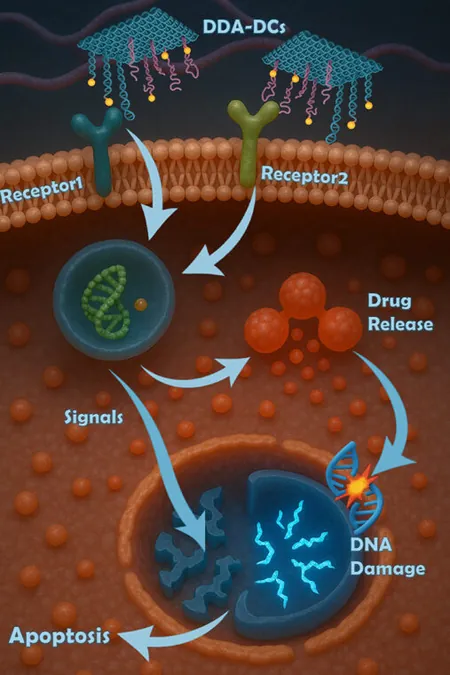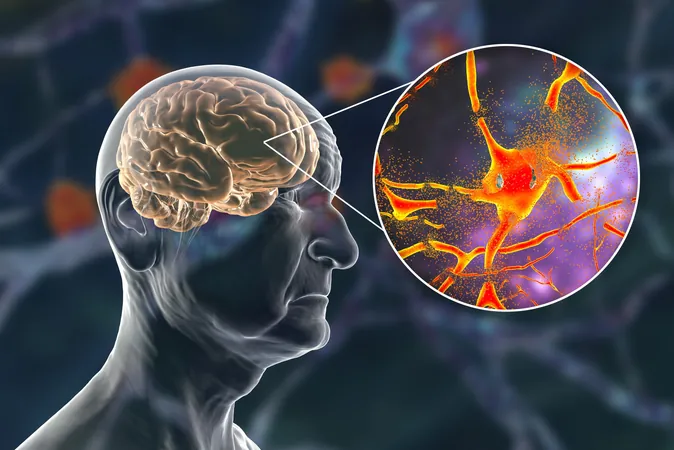
Revolutionary DNA Aptamers Target Leukemia Stem Cells with Precision and Efficacy
2025-04-03
Author: Wei Ling
Groundbreaking Discovery in Leukemia Treatment
Researchers at the University of Illinois Urbana-Champaign have made a groundbreaking discovery in the fight against leukemia, utilizing drug-carrying DNA aptamers to deliver a formidable therapy that precisely targets the cancer's stem cells. These elusive cells are notorious for sparking cancer relapses, making them critical targets for effective treatments.
What Are DNA Aptamers?
DNA aptamers, which are short, single-stranded DNA molecules, can bind to specific targets, akin to larger antibodies. However, these aptamers do more than just deliver therapeutic drugs; they are also toxic to leukemia stem cells, offering a dual attack on the disease.
Research Leadership and Publication
Led by Xing Wang, a professor of bioengineering and chemistry, the findings were published in the prestigious journal Advanced Functional Materials. Wang described this approach as a significant leap in cancer research, stating, “This work demonstrates a way to get to the root of leukemia. Targeted cancer treatments often face challenges with toxicity or efficacy, but our aptamers seek out these stem cells specifically and kill them effectively.”
Challenges in Treating Leukemia
Leukemia, a type of blood cancer, poses unique challenges compared to solid tumors, primarily due to the circulation of cancerous cells throughout the body and the difficulty in surgically removing them. The presence of leukemia stem cells—though constituting a small fraction of cancer cells—enables the disease to evade treatments, often hiding in the bone marrow and outlasting chemotherapy efforts.
Importance of Targeting Stem Cells
Postdoctoral researcher Abhisek Dwivedy, the study’s first author, emphasized the importance of targeting and eliminating these stem cells, as their survival can lead to relapses and the emergence of secondary cancers. The research team first identified specific DNA aptamers that latch onto markers found on acute myeloid leukemia stem cells—specifically aiming to distinguish the stem cells from other cell types.
Enhancing Treatment Effectiveness
Wang noted, “A significant revelation from our study is that targeting two markers related to leukemia stem cells, rather than one, enhances the selectivity and effectiveness of the treatment.” Current antibody-drug conjugates targeting a single marker tend to affect healthy cells as well, leading to higher toxicity. The use of two markers minimizes this issue, providing a specific targeting mechanism.
Combining Aptamers with Cancer Drugs
To enhance the therapeutic power of their aptamers, the researchers combined them with daunorubicin, a powerful leukemia medication. These drug-loaded aptamers successfully transport the drug into cancer cells, releasing it directly where it is needed, overcoming the drug's challenge of penetrating cell membranes unaided.
Efficacy of the New Treatment
The efficacy of this innovative treatment was evaluated both in cultured leukemia cells and in live mice models. Remarkably, the use of the aptamer alone led to a 40% reduction in cancer cells within 72 hours, demonstrating its inherent toxicity against leukemia. Furthermore, when combined with daunorubicin, the aptamer-drug complex eradicated cancer cells using a dose 500 times more diluted than typical clinical dosages. In mice, the targeted delivery resulted in comparable effectiveness at a dosage ten times smaller than the established therapeutic dose.
Promising Results
“Seeing significant survivability and tumor reduction in treated mice with no off-target effects was incredibly promising for us,” Wang remarked, highlighting the potential for this innovative therapy.
Future Research Directions
Looking ahead, the research team aims to broaden the scope of their DNA aptamer technology to encompass other types of cancer by identifying unique surface markers. Dwivedy expressed optimism regarding future applications, stating, “Every cancer cell displays distinctive surface biomarkers. If we can pinpoint markers unique to various cancers, we can expand our targeting strategy. Furthermore, pairing drugs with DNA molecules may prove easier than with proteins, unleashing new therapeutic possibilities.”
Conclusion
The team’s findings herald a new era in targeted cancer therapies, possibly revolutionizing the way we approach leukemia and other malignancies in the future. Stay tuned for more updates as this research evolves!





 Brasil (PT)
Brasil (PT)
 Canada (EN)
Canada (EN)
 Chile (ES)
Chile (ES)
 Česko (CS)
Česko (CS)
 대한민국 (KO)
대한민국 (KO)
 España (ES)
España (ES)
 France (FR)
France (FR)
 Hong Kong (EN)
Hong Kong (EN)
 Italia (IT)
Italia (IT)
 日本 (JA)
日本 (JA)
 Magyarország (HU)
Magyarország (HU)
 Norge (NO)
Norge (NO)
 Polska (PL)
Polska (PL)
 Schweiz (DE)
Schweiz (DE)
 Singapore (EN)
Singapore (EN)
 Sverige (SV)
Sverige (SV)
 Suomi (FI)
Suomi (FI)
 Türkiye (TR)
Türkiye (TR)
 الإمارات العربية المتحدة (AR)
الإمارات العربية المتحدة (AR)